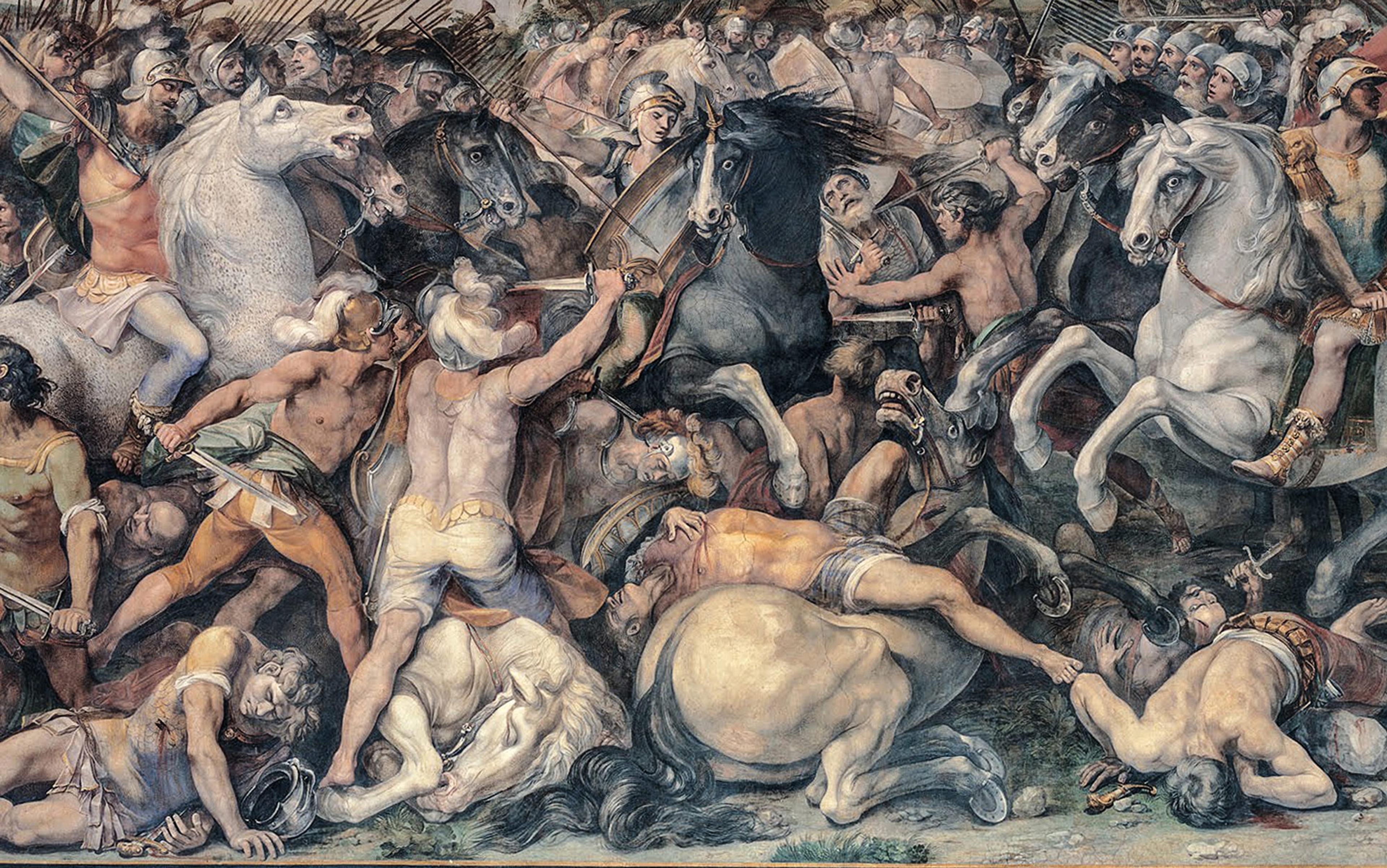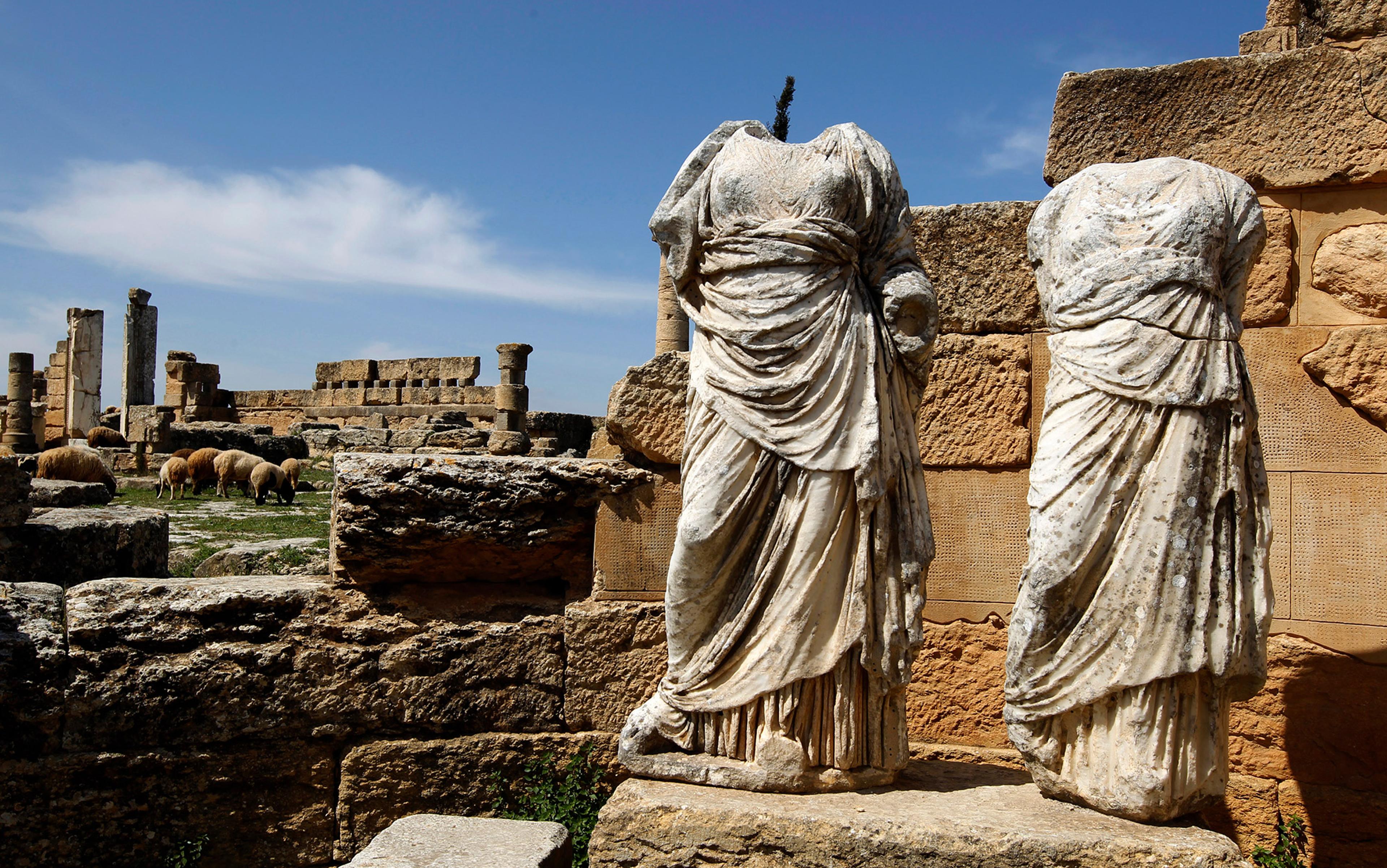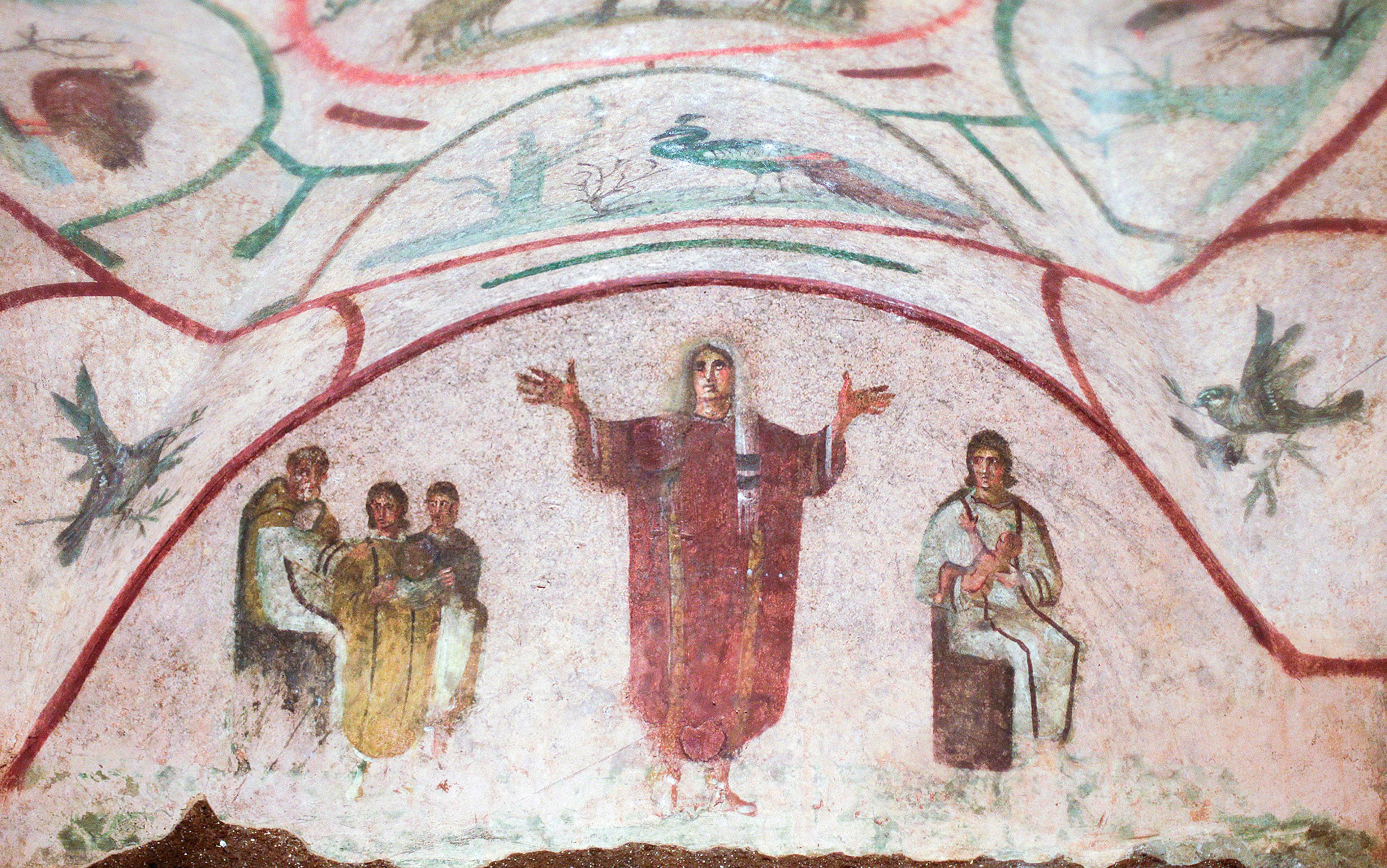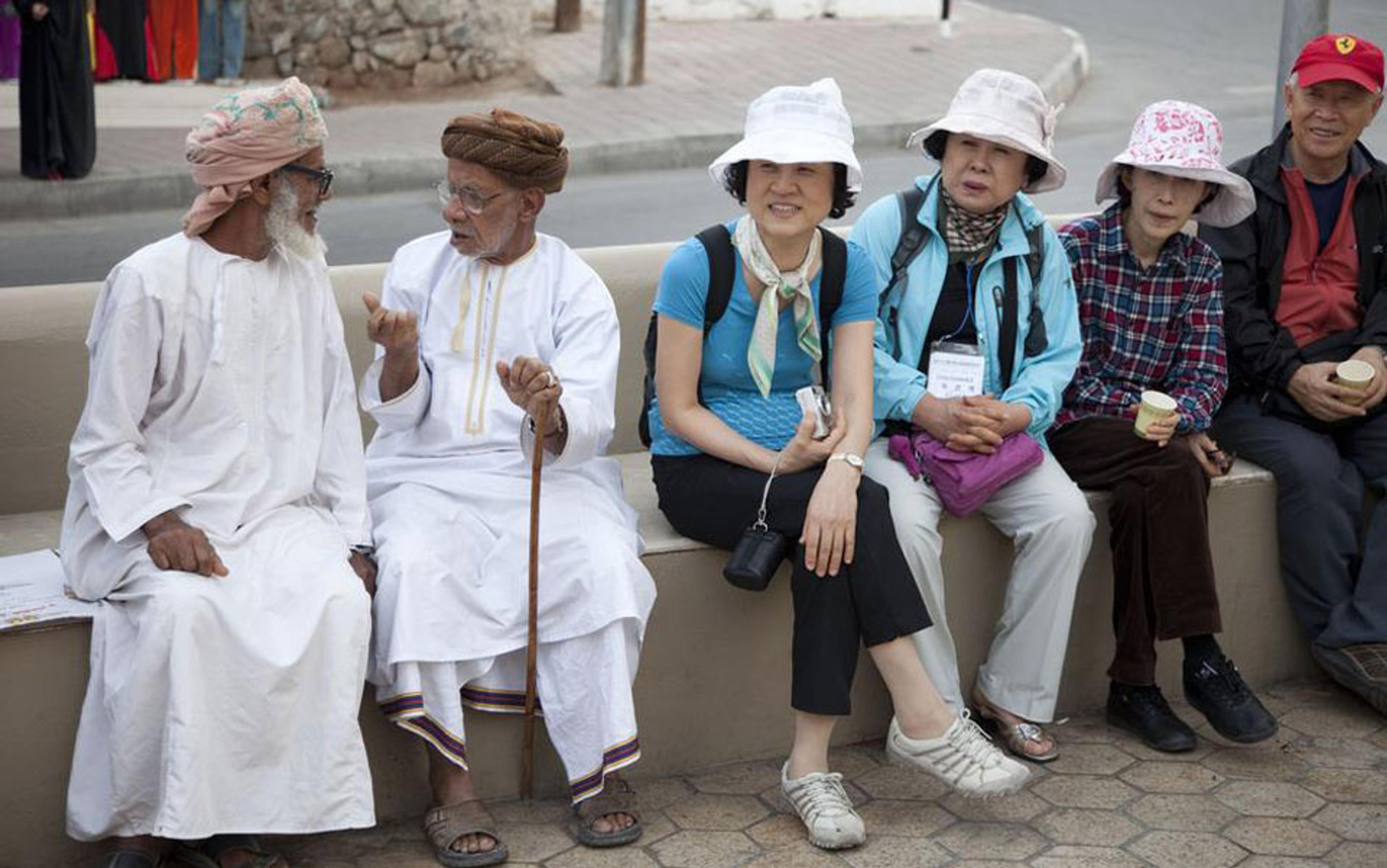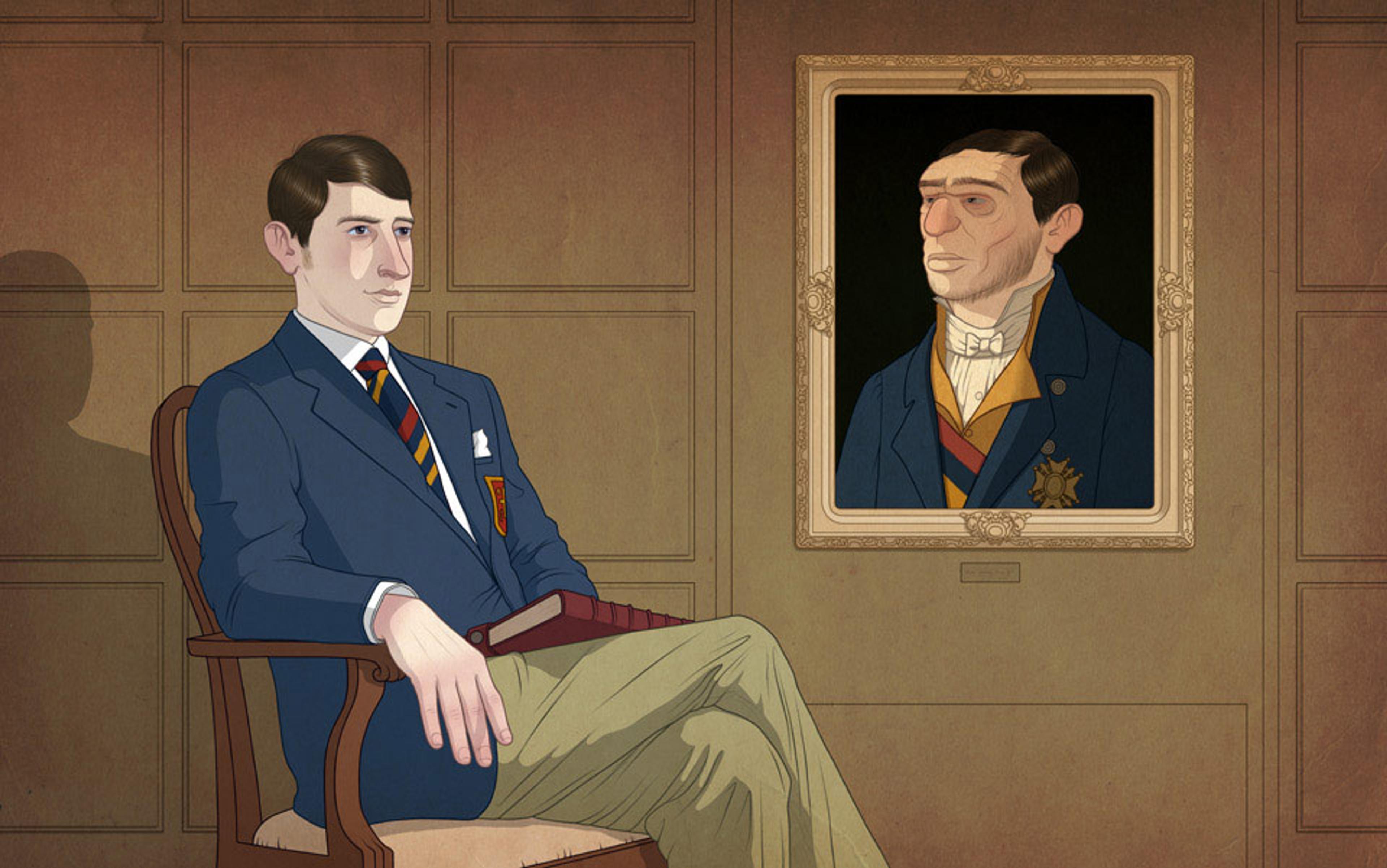A series of bizarre night-time incidents in the woods of northern Europe, around 360 CE, reveals the perils that outsiders and foreigners faced in a world dominated by ancient Rome.
For centuries, many ethnic tribes – of Alans, Quadi, Marcomanni, Sueves and Vandals – had called these forests their home. East of the Rhine river and north of the Danube had long been territory unclaimed by Rome’s empire. But the tribes’ connection to the land, their resistance to using the Mediterranean languages of Latin or Greek, and their penchant for animal-skin styles of dress perennially nagged at the sensibilities of classical elites, who disparaged them collectively as ‘barbarians’. It was around the year 360 that a Roman-sponsored headhunter – ostensibly to keep the border secure – kidnapped, killed and terrorised one of these tribes, the Alemanni, who dwelled in the region.
At the frontier of the Roman empire, such covert military operations – of night-time murderers sent to invade tribal land, whom the Romans rewarded handsomely by the scalp – contributed to widespread ethnic stereotyping about peoples on the border. Ethnic biases pervaded civilian culture, both before and after the 4th century.
Using the pseudoscience available to their classical world, Romans inferred character traits from geographic location and from the influence of the stars. Greek and Latin writers readily conjured images of northerners, who had been born under the constellations Ursa Major and Ursa Minor, as too ‘bearish’ and frigid to be civilised. Classical audiences viewed the Alemanni’s neighbours, the Vandals, as ‘effete, greedy, [and] treasonous’, although most populations who lived beyond the comfort of the Mediterranean olive trees, in fact, would come to be denigrated in similar terms. By the late 4th century, equating any ethnic group who had migrated into Roman cities, such as Goths or Scythians, with ‘four-footed creature[s]’ was a common practice of xenophobic commentators. Contemporary Romans would enliven these migrants’ statelessness with a literary flourish from Homer: in these trying times of conflict, one Christian clergyman said, quoting the Iliad, society needed to drive out ‘these ill-omened dogs’.
It’s hardly surprising, given the size of Rome’s empire, which crossed three continents and would fit snugly inside the borders of roughly 50 modern nations, that the number of ethnicities mentioned in the ancient sources is head-spinning.
From the Mauri and Garamantes of the empire’s Saharan borders to the Thracians and Galatians of the Balkans and beyond, to the mountainous interior of Asia Minor to the Palmyrenes, Idumaeans and Nabataeans dwelling on Rome’s distant deserts, dozens of groups had their own recognisable customs, histories, origin stories, languages and beliefs. They were as instantly perceptible as the trouser-wearing Parthians, the curious-cap-wearing Phrygians, and the Thracians garbed in neither classical togas nor tunics, but in their preferred dress of pelts.
Yet, even as foreign traits elicited snickers and, sometimes, forceful reprisals from traditionalists – who, by the 4th century, succeeded in convincing Rome’s toga-wearing, sandal-sporting politicians to ban the wearing of boots and trousers on the streets of Rome – foreign cultures thrived and changed everything from the sounds heard at the local market to the dishes offered at the table. By the 1st century CE, Syrian dates and Egyptian olives competed for shoppers’ attention in Italian markets, as those regions and their people became incorporated into Roman power. In a similar process a couple of centuries later, Persian pears were included in a popular herbed cheese spread. And while wine in classical times was ubiquitous – imported to Italy from vineyards as distant as Gaza in the 5th century – it was also well known that, should a Roman ever want a refreshing alternative, Egyptians or residents of Lusitania, in Portugal, could oblige. Their cultures were famous for brewing beer.
It would be misleading to treat the politics of ethnicity, largely framed in terms of skirmishes with ‘barbarians’ on the battlefield, as a uniquely 4th-century concern, however. Ethnicity was a visible fact of life in ancient Roman society from the city’s earliest years as a monarchy in the 8th century BCE, when Romans first began to forge a multiethnic identity through their cultural engagements across the Italian peninsula. From Oscans, Sabines, Piscene, Ligurians, Etruscans and Umbrians, to, of course, the local Latins of central Italy – some 30-odd tribes dwelled up and down the Italian peninsula during this early era, continuing into Rome’s formative years as a republic, 200 years later. As the ancient writer Dionysius of Halicarnassus put it, the city of Rome’s demography was a motley assemblage: of Opicians, Marsians, Saunites, Tyrrhenians, Brettians, Ombricans, Ligurians, Iberians, Celts and others – ‘some of whom came from Italy itself and some from other regions’.
Many of these groups had not only their own name. In scenes on pottery and lines of poetry, they circulated common myths about their shared descent and revered stories about their ancestors’ wanderings and their geographical origins. They identified with their land, cultivated their own religious practices, languages and customs, and fostered a sense of solidarity with each other. Greek residents of important Italian trading ports, such as Naples, kept alive the language, art, culture and customs of Greek colonists who had originally settled around the Bay of Naples, while, to the north, elite families of Etruria made public displays of their worship at local Tuscan sanctuaries, where they left dedications in the Etruscan language to specifically Etruscan gods. By the time the Romans had conquered a majority of the Italian peninsula, in the beginning of the 1st century BCE, these groups and their traditions had made the Roman republic a multiethnic society.
The pioneering Latin poet Ennius came from one such family, whose complicated heritage was still widely acknowledged by a Roman of a much later period. ‘Ennius used to say that he had three hearts,’ said the imperial writer Aulus Gellius, ‘because he knew how to speak Greek, Oscan, and Latin.’ Historians are fortunate to have such an insightful secondhand perspective on Rome’s murky adolescent years, but Ennius’ experience was undoubtedly not unique. The rising city on seven hills, Rome, was a collection of ethnic neighbourhoods: Etruscans on Caelian, Sabines on the Quirinal. Major arteries that pumped people through the city, such as Vicus Tuscus, or Tuscan Way, preserved the feel of the people whose distinctive languages, clothes and customs spilled into the streets. The capital’s defining feature, as one political handbook put it in the 1st century BCE, was its ‘conglomerate of ethnicities’.
Almost inevitably, questions of who belonged followed, arising during some of the republic’s most intense periods of contact between different groups. After the wars with the North African power Carthage in the 3rd and 2nd centuries BCE, for example, in which Rome saw both catastrophic losses on the battlefield and significant territorial expansion into Africa, stereotyping the defeated Carthaginian people and their supposed faults became second nature to many residents of Italy. The practice included everything from isolated name-calling, as Latin writers, who saw themselves as culturally superior, skewered Carthaginians for their ‘trickery’ (calliditas) while praising Romans for their ‘sensibleness’, to the adoption of a set of unquestioned colonialist, imperialist assumptions, which worked their way into homework assignments at school. ‘Should Carthage be destroyed, or handed back to the Carthaginians, or should a colony be established there?’ The string of essay questions was an excellent illustration of a multifaceted rhetorical case that combined a challenging number of ideas, said Cicero, who never mentions whether schoolchildren or their instructors were asked to justify, let alone acknowledge, the ethnocentric premise of the curriculum.
Citizens and emperors regularly came from provincial origins far beyond the seven hills of the Tiber
Romans recognised the danger, of course, in trying to force together a functioning society from so many disparate customs and backgrounds, seen most clearly in their refusal to implement a universal language, such as Latin, across their many provinces. Being Roman meant accepting a healthy tension between a wide variety of cultural practices – in artistic expression, language and dress – while providing the building blocks of a common experience, in law, civic religion and political ritual. Still, by the time Rome emerged from the civil wars of Caesar’s era, the young advisor and worried cultural ambassador Maecenas is reputed to have cautioned Rome’s first emperor, Augustus, that a ship of state ‘manned with a crew of every ethnicity’ risked becoming ‘waterlogged’, by which he seemed to admit that, for all its vaunted diversity, Roman society would struggle to cohere without articulating at least some common principles or values.
Citizenship became ancient Rome’s great leveller. Even before Caesar’s death in 44 BCE and Maecenas’ reservations about the return of monarchy in the political order of the new Augustan age, the Romans had figured out a strategy for building a functioning civic society from its disparate residents by offering them citizenship rights. When 4,000 Roman soldiers at the Iberian colony of Carteia married local women, had families, and yet themselves were denied the rights of Romans living in Rome, the men petitioned the senate, who agreed to grant them a special legal status. ‘Latin rights’, as the senate called them, gave the men in Spain a modified place in Rome’s political community.
By the early empire, 48 CE, Augustus’ step-grandson, Claudius, himself born in Gaul, was determined to extend citizenship beyond Italy – including to Gaul. Beyond the Alps, he told the senate, in regions such as Gallia Narbonensis and Gallia Comata were talented men who would make good advisors and civil servants. The Roman senate agreed. By the 2nd century – the age of Rome’s greatest territorial might and unmatched cultural influence – both citizens and, more importantly, emperors regularly came from provincial origins far beyond the seven hills of the Tiber.
The process of incorporating Rome’s many ethnicities into a functioning civic society through citizenship continued for at least three more generations in this piecemeal fashion. Then, in 212 CE, the emperor Caracalla granted to every freeborn person the same legal rights and protections of citizenship. It was a watershed change. Ancient Rome had become a multicultural empire of equal citizenship status before the law, regardless of one’s ethnicity.
It used to be that scholars of the ancient world customarily stopped discussing the history of citizenship precisely at this moment in Rome’s story, as if Caracalla’s universal grant to the free people of the Mediterranean marked the pinnacle of classical antiquity’s social and legal evolution. To hear the medieval historian Patrick Geary tell it in his highly influential book The Myth of Nations (2002), once the emperors offered citizenship rights to everyone, the ‘distinction’ between who lived outside the empire and who lived inside ‘meant nothing’. For decades, a version of this questionable claim appeared in academic studies, suggesting – incorrectly – that, with the arrival of the later empire, politicians had, once and for all, solved the problems of integrating different ethnicities into the Roman state. In fact, 212 CE led to the development of new problems.
Foreigners who crossed the border and chose to settle themselves or their families on Roman land would live permanently as second-class people. They could be sold into slavery at a whim, had no rights to bring grievances before a Roman judge, and lacked the protections of property afforded by making legally recognised wills. What’s remarkable is that, even as they recognised these injustices, those who came in search of greater opportunity or left their homelands out of necessity, as many did, still found creative ways to navigate Rome’s two-tiered legal system.
Neither before the democratisation of Roman citizenship in 212 CE nor after had identifying with an ethnic group or living in a cosmopolitan city alongside people of other ethnicities been particularly easy. A shared language such as Latin or Greek brought citizens and non-citizens together, as did a packed calendar of holidays and secular games, which fostered civic pride. But, even with these efforts to forge civic community, many challenges persisted.
Where victory proved impossible, brick walls became the acceptable alternative
Romans of more traditional stock lamented the arrival of this colourful world – of Far Eastern spices, unusual fashions and garbled languages – disparaging it as nothing short of an environmental degradation. ‘Why are the Syrian rivers polluting our Tiber?’ quipped Juvenal, a satirist of the 1st century CE. While many in his audience laughed, at least a few shared his hostility, a situation that grew only worse a century later, when a Roman could come from any of the empire’s distant provinces and cultural or linguistic backgrounds.
Bigotry and cultural superiority came hand in hand with Rome’s push to build a multiethnic society. By 235 CE, two decades after the emperor Caracalla’s citizenship decree, when the first half-Alan, half-Gothic emperor Maximinus was crowned from the borders of northern Thrace, he was roundly shouted down in the senate for being a ‘Cyclops’, the Homeric bogeyman of Odysseus’ travels. Men and women of unusual ethnicities were often equated with wild animals. By the 3rd century CE, public monuments regularly characterised boastful emperors with strings of ethnic-based titles after their names – Parthicus, ‘conqueror of the Parthians’; Dacicus, ‘conqueror of the Dacians’; Gothicus, ‘conqueror of the Goths’ – each adjective lined up after an emperor’s name the way athletes arrange their trophies.
By the start of the 4th century, imperialism increasingly meant the conquest of these ethnic groups. And, where victory proved impossible, a visible marker of exclusion – tall, unscalable brick walls – became the acceptable alternative. Ancient Rome was on its way to closing its gates.
It’s a tragedy that so many of the tens of hundreds of these ancient peoples’ histories have been lost. There are no more ethnic Sueves or Vandals or Galatians or Nabateans. In trying to fit in, some ancient individuals apparently gave up too much. Scholars have a technical way of describing this disappearance of a quality so malleable as to be fragile. Ethnicities ‘decompose’.
Yet the problem of how to welcome individuals of different ethnicities never went away, as some Romans hoped it would. According to one scholar’s estimate, there were between 1 and 2 million foreigners, peregrini, each from a different ethnic background, living within the borders of the 4th-century CE Roman world. Many endured terrible treatment through no fault of their own, simply due to prejudice. Gamblers at the racetrack, lamenting their lost winnings, would lash out against foreigners in an irrational frenzy, one 4th-century writer observed. Almost every Roman family, one bishop said, owned a Gothic slave.
Remarkably, those peregrini of varying ethnicities kept coming, as cooks, merchants and soldiers: Vandals, Goths, Alans, Alemanni and more. A century before the fall of the western empire, Rome’s ship of state was far from the ‘waterlogged’ vessel that the first emperor’s advisor feared it would become. The long-established ideal of Rome as a place of opportunity and cosmopolitanism still drew people to its cities – by one calculation, at a rate of perhaps 0.5 per cent per generation. ‘I see now what I have often heard of with unbelieving ears,’ one tribal Gothic chief reported, in the 380s CE, during a state visit to the growing eastern capital at Constantinople. Hundreds of thousands of people were flowing together in its markets and streets, ‘like a flood of waters streaming from different regions’.
Foreigners in Rome would have no access to what had earlier been understood as a via or ‘path’ to citizenship
None of these new arrivals would ever gain the rights of citizens. There is simply ‘no evidence,’ the historian Ralph Mathisen has explained, ‘of any [foreigner] being formally granted Roman citizenship after 212.’ These rights would remain the exclusive purview of people who lived within the boundaries of the empire as they had been drawn in Caracalla’s time. For Rome, the implications of its unwillingness to address that problem, year after year after year, were a harbinger of difficult times ahead.
Absent any political leadership – a new emperor Claudius or Caracalla, for example – foreigners in Rome would have no access to what earlier generations understood as an iter or via, a ‘path’, to citizenship. Everyone from xenophobic town councillors to bigoted vegetable sellers, bath attendants or clergy expected foreigners to change their ethnic dress, speak the classical languages in public and otherwise abandon their ethnic, ancestral ways, if they wanted to find acceptance – behavioural requirements that would have sounded as deeply unreasonable and unrealistic in the early 5th century as they are patently discriminatory today. By the year 410 CE, one outsider, a Goth named Alaric, had had enough. For the first time in eight centuries, the city of Rome would be mercilessly attacked.
Did the Romans have the intellectual tools to describe, articulate and address the challenges and opportunities that ethnicity posed for their society? In the ancient languages, foreigners constituted what Roman writers called nationes, gentes or civitates. Modern translations can vary: ‘nations’, ‘people’, ‘communities’. But most ideas were variants of a trusty ancient Greek standby word, ethnos. ‘Ethnicity’, as we would call it, was such an ever-present fact of ancient-Mediterranean life that some Christians, during their fight for integration, pretended that they, too, should constitute their own ethnic group, if it could bring them greater social status. Yet the modern understanding of what ethnicity is and how it functions seems so far removed from the classical world’s intellectual frameworks that it’s easy to understand why Romans struggled with it.
Modern writers enjoy a full range of vocabulary to describe ethnicity, with the consensus that ethnicities are best understood when they are active. In studies of every historical time and place, you can find ethnicities variously characterised as ‘elusive’ or ‘contested’ or ‘constructed’. They can be ‘displayed’, ‘performed’, ‘mobilised’, ‘embodied’ and ‘manipulated’, even ‘switched on or off’, if the setting allows. Much of this conversation has been established for generations. Ever since the anthropologist Fredrik Barth’s book Ethnic Groups and Boundaries (1969) identified ethnicity as a social phenomenon, one that arises primarily at the boundaries of belonging, the assumption that ethnicity resides in any one person or group has almost universally been discredited. There’s a ‘dynamic’, ‘multifaceted’, even ‘mutable’ aspect to ethnicity, which is as widely admitted today as it is almost universally absent from the work of classical writers, who favoured rigid notions of identity and clear-cut origin stories, bordering on the mythical and fanciful. People’s ethnic origins are no longer presumed to be, as ancient writers frequently supposed, ‘primordial’.
Of course, it’s hardly odd that classical writers rarely ventured into this depth of modern analysis. Contemporary concepts such as ‘creolisation’ or ‘bricolage’ or the analyses of interacting cultures based on ‘middle ground’ theories, pioneered in studies of colonial Indigenous North America, were light years ahead of the Romans’ own premodern conceptual frameworks. The ancients tended to simplistic observations, gross stereotypes and the occasional charitable comment. Caesar’s claim that Gaul was divided into three parts was based on his knowledge of the three ethnic groups – the Belgians, the Aquitani and the Celts – who dwelled within its borders. The world beyond the empire was downright strange, the lawyer Apuleius said, filled with people who were truly remarkable both for their stupidity and for their cleverness. Different groups, he explained, ‘produced people of differing talents’.
Through the careful elucidation of differences in style and shape, local artefacts speak loudly, in their own way
As raw material for writing about ancient Rome’s ethnicities, these written sources admittedly might not take us very far. Given the lopsided nature of the evidence from the ancient world in general, from elite monuments, rich tombs and extremely literary offerings, Rome’s ethnicities also rarely, if ever, speak for themselves, although the discovery of even the most mundane artefact can sometimes open up new horizons.
Belts, rings, razors, combs, pots, cups, plates, bracelets, hairpins and even nail clippers or cleaners, all the personal effects that an individual might imbue with their expressions of their own culture, might not come with a personal story, or even a name. But, to archaeologists and historians, they have become nice illustrations of ethnicity’s slipperiness. A distinctive-looking brooch, found at the empire’s northern Pannonian border, has an equal chance of being a sure piece of ethnic Pannonian jewellery as it does an expression of a transplanted outsider who chose to embrace the popular fashions of their new surroundings. And while an unexplored frontier might have seemed to Romans an undifferentiated landscape of hostile tribes, through the careful elucidation of differences in style and shape, local artefacts – a handy loop and broadblade nail cleaner used by Indigenous peoples in eastern Britain, a circular disk and lattice-worked copper preferred in the west of England – speak loudly, in their own way.
If the study of ethnicity is to hold any purchase for ancient Rome, a good starting point might be to recognise, as the historian Louise Revell has put it in her book Ways of Being Roman (2015), that ‘[a] group’s ethnic identity’ is always being constructed ‘in relation to other ethnic groups’. But more work needs to be done to go beyond consensus definitions and the fashionable, formulaic cultural analyses that they regularly produce. The highly political, frequently imbalanced and often patently unjust relation between different ethnic groups deserves more historical scrutiny.
